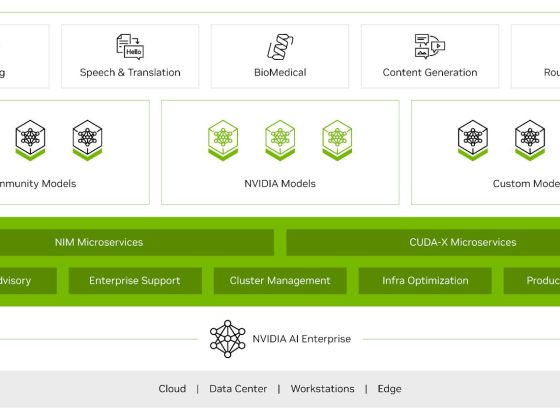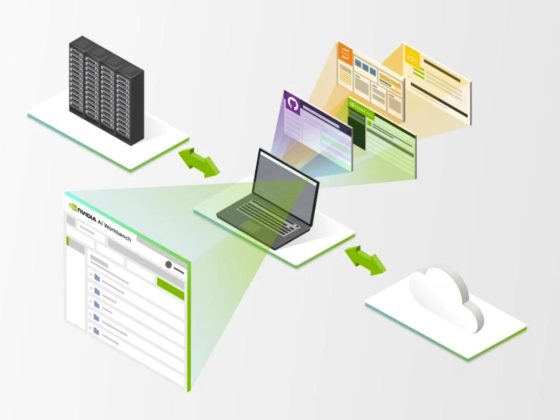Cloud spending is on the rise, and more organizations are investing in multicloud strategies. Here’s how developers and architects can gain an edge in this rapidly evolving field.
For many organizations today, a multicloud strategy is the way to go. Enterprises are using multiple cloud services from different vendors to build infrastructures that support computing, storage, development, and other areas of IT.
From our partners:
Industry research indicates the trend toward the multicloud use will continue for some time. A report by Grand View Research predicts that the global market for multicloud management systems will grow by 28 percent between 2022 and 2030. The growing emphasis on automation, efficiency, and effective organizational governance processes is expected to drive growth, according to the report.
The increasing versatility of cloud computing technologies and the adoption of containerization and microservices for cloud-native applications will also contribute to the rise in multicloud infrastructures, the study notes.
“Organizations of all sizes have been embracing the multicloud construct, to continue to leverage investments in existing IT infrastructure, apps, and employee skills and expertise,” says Masaf Dawood, director of application services and modernization at talent site Toptal. Dawood notes “the trend is accelerating” due to the ability of a multicloud to better address the needs of various applications and workloads.
Multicloud can involve a multitude of cloud assets used across several cloud-hosting environments, whether it be public clouds, private clouds, or a hybrid environment. An organization might use, for example, software-as-a-service (SaaS) from one vendor, infrastructure-as-a-service (IaaS) from another, and platform-as-a-service (PaaS) from yet another. In some cases, an enterprise might use different providers for different types of workloads.
Regardless of the configuration, the multicloud concept is hot. And as a result there is growing demand for people who have multicloud development experience and skills.
High demand for multicloud developers
“Having multicloud skills is more important for developers, architects, and even technical managers because more and more enterprises are adopting multicloud strategies,” says Kamesh Ganesan, lead multicloud architect at software company Oracle.
“Enterprises choose multicloud for various reasons,” Ganesan says. “For some it might be regulatory and compliance, which dictates the data shouldn’t be stored in just any place.” For others, it might be to avoid a lock-in with a specific vendor. And for still others, it might be a need for the features and benefits of services in multiple clouds.
“Mastering Microsoft Azure, Amazon Web Services, and Google Cloud—while having at least some familiarity with offerings by other companies such as Oracle—will ensure that a technology professional can effectively move between jobs and contracts,” says Nick Kolakowski, senior editor of Dice Insights at technology career marketplace Dice.
Organizations spent $73.9 billion on cloud infrastructure in 2021, an increase of nine percent compared with 2020, according to International Data Corp.’s Quarterly Enterprise Infrastructure Tracker.
“But there’s also a significant gap developing between companies’ embrace of the cloud and technology professionals’ cloud-based skills,” Kolakowski says. He cites IBM’s “Transformation Index: State of Cloud” report, which notes that 69 percent of respondents lacked cloud skills even as 71 percent of organizations planned on spinning up new cloud positions.
Grow your skills for multicloud development
There are multiple routes to becoming a multicloud developer. “Some technology professionals opt for self-learning, teaching themselves using the documentation and tutorials” available through cloud providers such as Amazon Web Services (AWS), Microsoft Azure, and other sites, Kolakowski says.
Others opt for formal online learning or classroom instruction offered by the leading cloud service providers, Kolakowski says.
It’s a good idea to gather as much information as possible about development for different cloud environments. For example, Ganesan says, developers or other interested candidates can view YouTube videos and read cloud vendor documentation.
Once someone becomes an expert or at least has a strong base in any single cloud such as AWS, Azure, or Google Cloud Platform (GCP), then learning about the other cloud services is relatively easy, Ganesan says.
Cloud certifications
Earning certifications is another option for those pursuing opportunities as multicloud developers. Each of the three dominant cloud providers—AWS, Azure, and GCP—has a certification path that requires an in-depth understanding of the services that are available and have been developed by the cloud provider, Dawood says.
“They are looking to ensure that you as a developer not only understand the service offering, but the application of it and how, when, and where to apply it,” Dawood says. “Coursera, Udemy, and other online sites offer training and certifications pathways.”
One option is to secure an initial certification and then follow the same or a similar path in one or two of the other cloud ecosystems, Dawood says. For example, he says, a developer could get an AWS architect certification and then go for a Google data engineer certification.
“All cloud providers offer some common base services that are very similar to each other, but they also branch out and offer unique services with their own dependencies to differentiate in the marketplace and attract clients,” Dawood says. “The ability to integrate [a] multicloud strategy across an organization is key to success and achieving your organization’s digital transformation goals.”
Becoming a multicloud developer “hinges on earning key certifications, as many recruiters and hiring managers require cloud-based certifications when considering candidates,” Kolakowski says. “As cloud platforms have evolved, the number of official certifications has proliferated. But possessing core certifications allows candidates to stand out in a noisy hiring environment.”
Some of the top cloud-related certifications, according to Dice, are:
- AWS Certified Solutions Architect—Professional
- CISM—Certified Information Security Manager
- Google Cloud—Professional Cloud Architect
- CISSP—Certified Information Systems Security Professional
- AWS Certified Solutions Architect—Associate
- Nutanix Certified Professional—Multicloud Infrastructure (NCP-MCI)
- Microsoft Certified: Azure Solutions Architect Expert
Multicloud is an exciting, evolving field
“The cloud industry is also rapidly evolving, so anyone who wants to become a multicloud developer needs to commit to continually learning new technologies and disciplines such as automation, which will rapidly change [the] contours of the job in years to come,” Kolakowski says. “That’s in addition to learning the ‘core’ skills and languages such as Python, Java, and the principles of software development.”
Regardless of the approach developers take to learning new cloud skills, there’s no doubt that professionals who gain knowledge in multicloud development areas will be valuable assets to organizations for the foreseeable future.
By Bob Violino
Source: Inforworld
For enquiries, product placements, sponsorships, and collaborations, connect with us at [email protected]. We'd love to hear from you!
Our humans need coffee too! Your support is highly appreciated, thank you!








